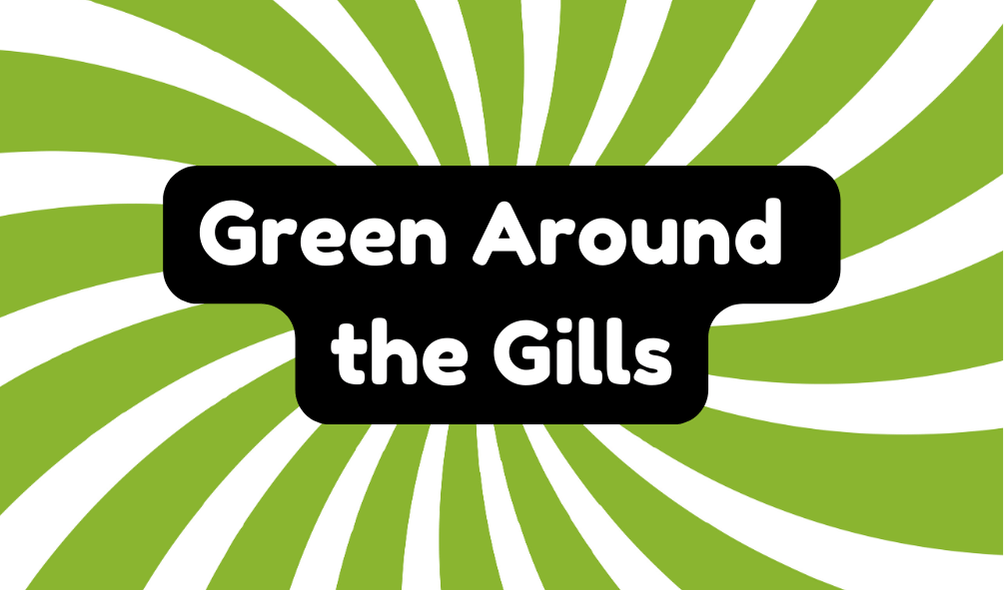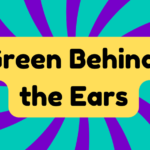The expression "green around the gills" refers to a person experiencing nausea or illness, often indicated by a pallid appearance. This idiom has roots dating back to the 1300s, where "green" symbolized sickness, while "gills" relates to the flesh near one's jaws. Commonly used collocations include "feeling green around the gills" and "turning green around the gills." Though a vivid way to express physical discomfort, it is essential to use this phrase judiciously to avoid clichés. Its relevance in today's language reflects our shared experiences of vulnerability and discomfort, revealing deeper truths about human life. More insights await exploration.
Synonyms
The phrase "green around the gills" has several synonyms that effectively convey a sense of nausea or discomfort. Each term offers nuance, reflecting various levels of queasiness, a sickly complexion, or seasickness symptoms. Understanding these expressions fosters clarity in communication, especially in contexts involving health or emotional distress.
- Pale as death: Suggests a profound level of illness.
- Queasy: Indicates a mild sense of nausea, often tied to motion sickness.
- Nauseous: A straightforward term directly describing the feeling of unease.
Employing these alternatives can enrich dialogue and writing. While the casual use of these phrases may seem harmless, awareness of their implications is essential for effective and precise interactions in both personal and professional settings.
Example of Sentences
Synonyms can enhance understanding of the phrase "green around the gills," offering alternative ways to express feelings of nausea and discomfort. This idiomatic expression vividly represents emotional discomfort associated with sickness or queasiness. Below are a few illustrative sentences that exemplify its use:
- "The sight of blood always makes her go green around the gills."
- "His face turned green around the gills after the spinning amusement park ride."
- "Even the mention of heights makes him go green around the gills."
Through these examples, we observe how the phrase not only captures physical ailment but also reflects deeper emotional responses. Such idiomatic expressions enrich our language, allowing nuanced communication around wellness and discomfort, whether physical or emotional.
Origin
While the phrase "green around the gills" has become a common idiom in contemporary language, its origins trace back several centuries, reflecting a rich history of color symbolism associated with illness. The term "green" has historically denoted various states of sickness since around 1300, while "gills" refers to the flesh around the jaws, a phrase first documented in the 1600s. Significantly, nautical origins suggest that sailors described their seasickness with this vivid imagery. This connection illustrates how human experiences of discomfort have shaped linguistic expression. Evaluating its historical usage reveals intriguing insights into societal perceptions of health, reminding us that idioms often carry deeper meanings that transcend their mundane appearances. Understanding these origins enriches our comprehension of language intricacies.
Collocations
Collocations associated with the phrase "green around the gills" enhance its expressive power and contextual understanding. These phrases often capture common scenarios and physical reactions that evoke a sense of discomfort or malaise. This idiom's utility extends into various situations, providing clarity and emotional weight to descriptions of illness or nausea.
- "feeling green around the gills"
- "look green around the gills"
- "turn green around the gills"
Such expressions invite deeper exploration of language, revealing how vividly we can convey human experiences. However, one must be cautious; while relying on color-based expressions can enrich communication, overuse can render them clichéd and less impactful. Awareness of this balance is vital for effective and dynamic language usage.
How to Use in Everyday Language
In various situations, the phrase "green around the gills" can effectively convey feelings of nausea or discomfort, making it a valuable addition to everyday language. By incorporating this colloquial expression into discussions about health awareness, individuals can articulate various states of unease, from motion sickness to the effects of overindulgence. For example, during social gatherings, one might use the phrase to describe a friend's reaction to a bad seafood dish, emphasizing their discomfort without resorting to blunt language. However, it is essential to use such idioms judiciously; relying too heavily on them may undermine genuine communication. Overall, integrating "green around the gills" into daily conversations can enhance emotional expression while fostering a deeper understanding of health-related experiences.
Why Is It Still Relevant Today?
Why does the phrase "green around the gills" continue to resonate in contemporary discourse? Its cultural significance lies in its vivid imagery, effectively conveying not just physical illness but also emotional distress. In a world increasingly connected yet emotionally complex, this expression captures a shared human experience. The emotional connotations associated with "green around the gills" allow us to discuss discomfort with relatable language. As we navigate modern challenges—be it anxiety or the realities of a fast-paced life—this phrase remains relevant, offering a linguistic shortcut to describe moments of vulnerability. However, as we embrace innovation in communication, we must also seek deeper expressions that reflect our nuanced emotional landscapes, moving beyond tired idioms to foster genuine connection.







